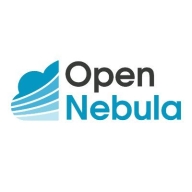![HPE Eucalyptus [EOL] Logo](https://images.peerspot.com/image/upload/c_scale,dpr_3.0,f_auto,q_100,w_64/13qmgl48si6583z3hdyvbfnigz48.jpeg?_a=BACAGSDL)

Find out what your peers are saying about Nutanix, Broadcom, IBM and others in Cloud Management.

| Company Size | Count |
|---|---|
| Small Business | 7 |
| Midsize Enterprise | 6 |
| Large Enterprise | 3 |
HP Eucalyptus helps customers grow revenue and stay ahead of competition by enabling developers to get the IT resources they need in seconds, not days. Its unique AWS compatibility ensures applications are easily deployed in private, public or hybrid cloud environments.
OpenNebula provides the most simple but feature-rich and flexible solution for the comprehensive management of virtualized data centers to enable private, public and hybrid IaaS clouds. OpenNebula interoperability makes cloud an evolution by leveraging existing IT assets, protecting your investments, and avoiding vendor lock-in.
OpenNebula is a turnkey enterprise-ready solution that includes all the features needed to provide an on-premises (private) cloud offering, and to offer public cloud services.
We monitor all Cloud Management reviews to prevent fraudulent reviews and keep review quality high. We do not post reviews by company employees or direct competitors. We validate each review for authenticity via cross-reference with LinkedIn, and personal follow-up with the reviewer when necessary.